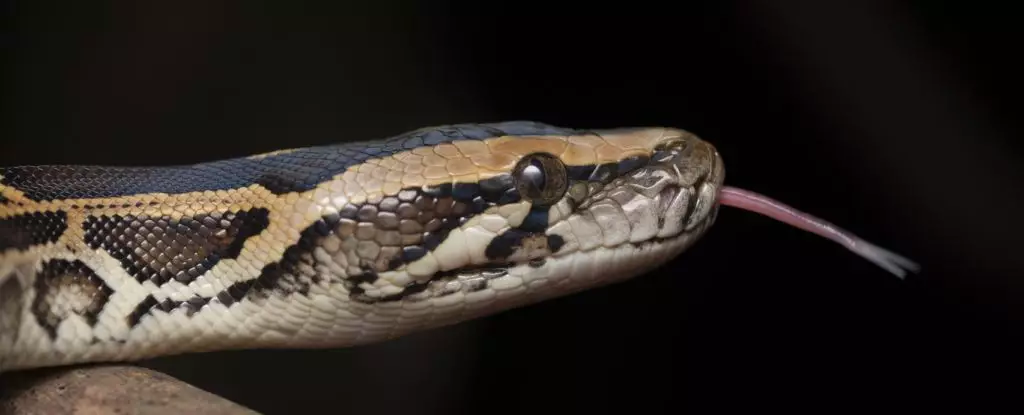Human minds tend to marvel at the seemingly miraculous ability of snakes to swallow prey whole and digest bones completely, yet few truly grasp the biological complexity involved. This feat is no mere trick of anatomy but a sophisticated biochemical process that challenges our understanding of vertebrate digestion. Historically, scientists limited themselves to observing that snake bones disappear without a trace, but mistrusted explanations fell short of describing the underlying cellular mechanisms. Now, groundbreaking research has revealed a previously unknown type of intestinal cell in Burmese pythons, which fundamentally shifts our perception of digestive specialization and evolutionary innovation.
What makes this discovery truly revolutionary is the identification of cells that can efficiently process and absorb massive amounts of calcium and phosphorus derived from bones. These elements, if not properly managed, would overload the snake’s system, risking toxicity and metabolic imbalance. The specialized cells are tailored for this task, featuring distinct microstructures—short microvilli and apical crypts—that optimize their ability to sequester excess nutrients. This discovery showcases nature’s uncanny ingenuity: evolution crafting cells purpose-built for a purpose that was previously confined to speculation.
The Surprising Implications for Biology and Evolution
The presence of these exclusive cells in Burmese pythons hints at a broader, more intricate biological narrative. It challenges the simplistic view that digestion is a uniform process across vertebrates. Instead, it reveals that some animals have developed highly specialized tissues to thrive in niche dietary scenarios—here, devouring entire prey, including bones. Intriguingly, these cells are not unique to pythons but have also been identified in the Gila monster, a lizard with a very different ecological niche. This suggests that the ability to handle high calcium loads through cellular specialization might predate the divergence of these species, hinting at a common evolutionary solution to a shared problem.
This insight calls into question previous assumptions that complex bone digestion was limited or inefficient in reptiles. Furthermore, it underscores the adaptive capacity of vertebrate evolution, where organisms fine-tune their internal machinery in response to dietary demands. Such cellular adaptations reflect a balance—maximizing nutrient absorption while avoiding metabolic overload. These cells exemplify the fine line between biological efficiency and toxicity, emphasizing that evolution often involves not only appendages and features but also microscopic cellular innovations.
Broader Ecological and Conservation Perspectives
Understanding the cellular underpinnings behind snake digestion offers profound implications beyond academic curiosity. It invites us to reconsider how animals are adapted to their environments and how their dietary strategies evolve over time. For predatory species that consume whole prey, including bones, these findings may unlock insights into their nutritional requirements and vulnerabilities. For instance, captive snakes often exhibit calcium deficiencies because their diets lack the skeletal components they need, highlighting the importance of these specialized cells.
On a larger scale, this knowledge could influence conservation strategies for reptiles and other bone-eating animals. As environmental changes alter prey populations and their skeletal compositions, animals may need to adapt anew—a process that could be hindered without a clear understanding of their internal machinery. Recognizing these cellular advancements also raises ethical questions about how humans manage and manipulate animal diets—whether in conservation, captivity, or agriculture—given that a perfect diet isn’t merely about missing nutrients but involves complex cellular machinery orchestrating absorption and excretion.
In essence, the discovery of these unique intestinal cells profoundly illuminates how evolution refines biological functions at a microscopic level, enabling extraordinary feats that continue to inspire skepticism and admiration. This revelation not only deepens our appreciation for snakes but also prompts us to explore the unseen, intricate worlds within all organisms—worlds that often hold the answers to questions we haven’t yet dreamed to ask.


Leave a Reply